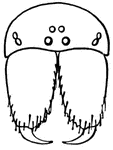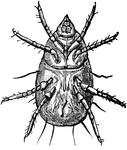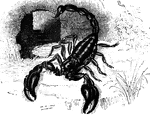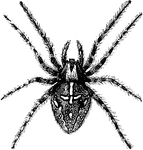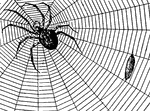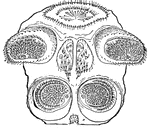Clipart tagged: ‘arachnid’

Siro Americanus
"The typical genus of Sironidae. Two species inhabit Europe, one the Philippines, and another (undescribed)…
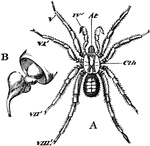
Araneida
"Mygale cæmentaria, typical of Araneida. A, female, natural size: At, cheliceræ; IV', pedipalpi;…
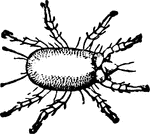
Cheese-mite
"The Cheese-mite, Acarus domesticus, and others are parasitic upon or beneath the skin of man…
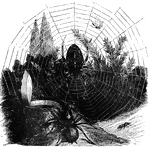
Garden-spider and trap-door spider
"Some spiders, like the Ctenizae, close the mouth of their subterranean resdence with a most…
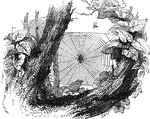
Garden-spiders
"Some, of which the Common Garden Spider, Epeira diadema is an excellent example, construct…
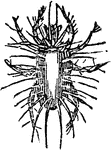
Harvest-tick
"The true ticks attach themselves parasitically to the bodies of various mammals, as sheep, oxen, dogs,…
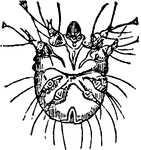
Itch-mite
"Of the true mites, the domestic or cheese mite and the itch-mite are examples." — Williams, 1889
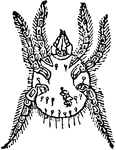
Cheese mite
"Of the true mites, the domestic or cheese mite and the itch-mite are examples." — Williams, 1889

Cotton Rust Mite
The cotton rust mite (Tetranychus gloveri) is a spider mite known for causing damage to cotton leaves.

Mygale
"The spiders with which we in temperate climates are most acquainted are of small size, but in hot regions…

Scorpion
Scorpions are found in warm climates, reaching their greatest size in tropical America and Africa.

Scorpion Diagram
"Diagram of structure of Scopionidae (most of the appendages removed). IV. to XX., fourth to twentieth…

Black Rock Scorpion
The Black Rock Scorpion (Scorpio (Buthus) Afer), "seen from above. At, the chelicerae, or chelate antennae;…
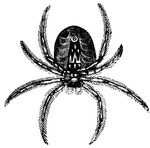
Spider
A Spider's spinning apparatus is peculiar. A reservoir inside contains gummy matter from which silk…
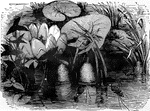
Spider, diving
"Another remarkable member of the Araneidae is the Diving Spider, Argyroneta aquatica, which…

Jumping Spider
The body of a spider consists of two parts, connected by a constricted waist, the unsegmented cephalpthorax…

Golden Silk Spider
The Golden Silk Spider (Nephila clavipes) is an arachnid species in which the female (above) is much…

Tarantula Wolf Spider
The Tarantula Wolf Spider (Lycosa tarantula) is an arachnid in the Lycosidae family of wolf spiders.…
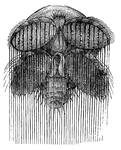
Spinnerets of a spider
"The most remarkable organs perceptable on the abdomen of the spiders are the spinnerets, by…
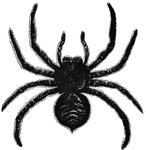
Tarantula
"The most celebrated of the Lycosidae is the Tarantula, Lycosa tarantula, of Southern Europe,…

